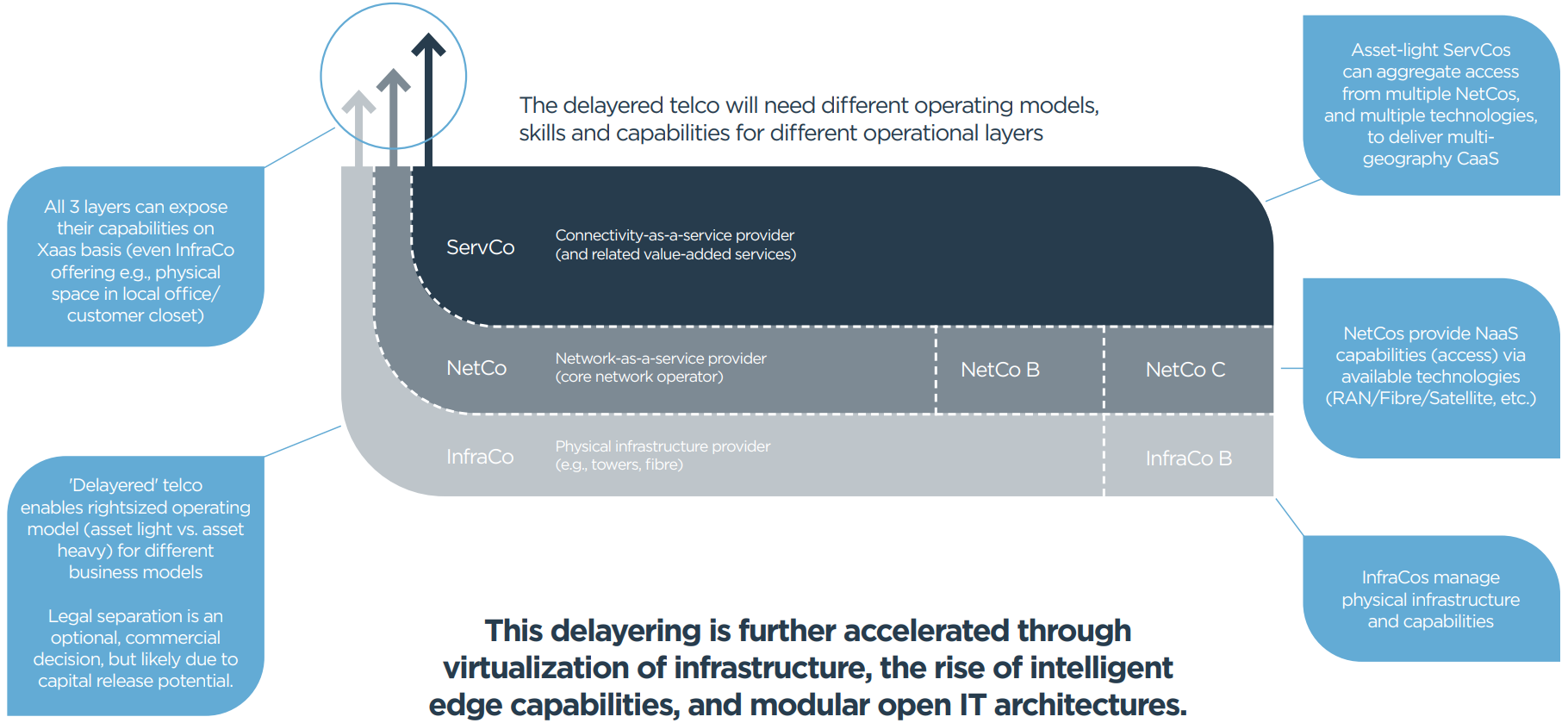Reflecting on Trends and the Future of Telecom
I must begin by admitting that this article wasn’t on my radar as a year-end reflection piece. My mind was deeply engrossed in preparing a proposal for a private mobile network. While researching the state of networks in a specific geographic area for such proposal, I came across a trend analysis for 2025 published by OpenSignal (Closing 2024 and Looking Ahead to 2025).
So, what prompted me to write this blog post? What part of that analysis made me pause and dedicate these minutes to reflect? Specifically, the final point caught my attention.
Delayering: The Next Big Transformation for Telcos?
Following in the footsteps of TowerCos and FiberCos, operators might look more seriously at splitting their businesses into infrastructure-focused NetCos and service-driven ServCos. This delayering could, in theory, unlock greater efficiency, allow NetCos to focus on long-term CapEx priorities, and free up ServCos to deliver innovative digital services.
This sparked my curiosity and led me down a rabbit hole of articles on the topic. Perhaps you’re wondering: what does this have to do with mobile virtual network operators? Let’s explore that by the end of the article.
The Three Layers of Telco Delayering
1. The InfraCo
This entity would own passive assets such as cell towers, fiber cables, poles, and real estate for data centers and exchanges.
2. The NetCo
This entity would own active assets for running a telecom network, such as radios, routing equipment, the core network, and the tech stack. NetCo could operate as an independent wholesale business, focusing on electronic and optical components rather than real estate. The company would operate on a medium-term, technology-led investment cycle, such as the transition from 5G to 6G.
3. The ServCo
This entity would specialize in retail and managed services, operating independently. It would integrate NetCo’s products with customer service and third-party value-added services, such as enhanced security and multi-device interoperability. ServCo would own the end-customer relationship, managing all go-to-market and customer management functions.
These concepts provide a fascinating lens to examine the future of telecoms and their evolving structures. As we dive into this discussion, we’ll also uncover how these transformations could impact mobile virtual network operators. Stay tuned until the end to explore the connection.

Image courtesy of tmforum CEO Playbook
But what are the supposed benefits of delayering
Specialized Focus
The ServCo, NetCo, and InfraCo model allows each entity to excel in its core area. ServCos innovate and enhance customer experience, NetCos ensure robust network infrastructure, and InfraCos focus on efficient resource sharing and streamlined infrastructure management.
Encouraging Competition and Innovation
This separation fosters competition and innovation. ServCos differentiate through service quality and value, NetCos optimize network performance, and InfraCos reduce redundancies through shared infrastructure, enabling cost-effective expansion and market growth.
Improving Efficiency and Reducing Costs
Specialization streamlines operations, minimizes redundancies, and enhances resource allocation. InfraCos’ shared infrastructure significantly lowers expenses and drives economies of scale, improving overall financial performance.
Facilitating Regulatory Compliance
By separating services, networks, and infrastructure, the model promotes transparency, accountability, and regulatory alignment. This structure ensures fair competition, consumer protection, and adherence to industry standards.
And How Is This Related to MVNOs?
If we analyze the three layers discussed earlier, we can clearly identify similar arguments to those we use when presenting a light MVNO as an alternative operator—particularly in the second point, where differentiation through service quality and value becomes a critical element for ServCos.
Regarding the layers the, 1st one: InfraCo, should not be our goal from the perspective of an MVNO, as it is unlikely that we will have the influence or decision-making power over these aspects.
2nd one: NetCo it is where our focus should be, from a network customer’s perspective. Our primary goal as an MVNO should be to secure the best service and pricing agreements with a reasonable number of NetCos, while avoiding exclusivities that would make us captive operators.
Finally, the ServCo is the role we should, as an MVNO, aim to be recognized for, and we must focus on differentiation.
In the various analyses conducted by our company across different markets and environments, we’ve found that many mobile virtual network operators barely differentiate themselves from the offerings of their host operators.
So, how do we achieve differentiation?
There are some legacy ways to differentiate, but let’s look to the future. This is where the concept of an Open Gateway comes into play. Open Gateway APIs provide operators with, albeit nascent, the potential to build truly differentiated services. Let me offer an example based on the perspective we’ve emphasized throughout our series of articles, with a strong focus on service quality.
Examples of Differentiation Through Open Gateway APIs
The usage of Quality on Demand (QoD) API offers application developers the ability to request stable latency (reduced jitter) or minimum throughput for specific application data flows between application clients (within a user device) and application servers (backend services), a typical use case would be the remote control of machines and vehicles (e.g. Automated Guided Vehicles, drones, robotic arms, factory production lines) that require stable data throughput and low latency to ensure secure and efficient operations.
For instance, when combined with the Home Devices QoD API that enables service developers to control the network configuration of end-user devices connected via a telco-provided WiFi access point, and dynamically adjust the Quality of Service (QoS) behavior for the IP traffic of a specific home device, or Simple Edge Discovery API that would allow an application to discover the nearest Edge-Cloud zone for it to connect to, let us optimize network performance by minimising propagation delay.
Connectivity Insights API. This API allows service developers to query the likelihood of meeting an application’s networking requirements for a specific user session. Based on this information, developers might then leverage the Quality on Demand API to request stable latency or minimum throughput to optimize the application’s performance.
The Future of MVNOs: Greater Differentiation Through Open Networks
In summary, the future trends points to increased opportunities for MVNOs to differentiate themselves, bolstered by the delayering of operators and initiatives toward leveraging the capabilities of more open networks. These open networks, in turn, become a service in themselves for service providers, creating a dynamic ecosystem for innovation and specialized offerings.
If you’d like to dive into the possibilities of Open Gateway application, don’t hesitate to openly contact us.

Guest Blogs are written by carefully selected Experts. If you also want to create a Guest blog then Contact us.
